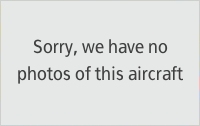With the installation of a laminar flow wing it was intended for the Seafang to replace the Seafire. The performance of the aircraft wasn't as improved as hoped and the type was cancelled.
In total eighteen Supermarine Seafang aircraft were built in two different variants.
During development of their Spiteful aircraft it had been noted by Supermarine that the laminar flow
wing that was intended for this aircraft could also be fitted to the Supermarine Seafire.
The potential of the Spiteful for naval conversion had led to the design of the aircraft to have provision for folding wings.
So under Supermarine's own Specification 474 Joe Smith came up with a design known as the Type 382, which was to be a Griffon 61 powered Seafire Mk XV fitted with a laminar flow wing.
By now the Fleet Air Arm was interested in the idea and Specification N.5/45 was issued requiring an aircraft featuring a laminar flow wing that could go further and faster than the
Seafire F.47.
The decision was taken to produce an interim Seafang prototype, so with the addition of a 'sting-type' arrestor hook the sole Spiteful Mk F.15 built became the Seafang prototype. This made
its maiden flight in January 1946, prior to this in March 1945 an order for one hundred and fifty Seafang Mk F.31s had been placed which were to be the same as the prototype. The idea was
that these would be used whilst the Seafang Mk F.32 was developed. The Seafang Mk F.31, meanwhile, had been sent to Farnborough on the
15th January 1946 where the Royal Aircraft Establishment was based.
The Seafang Mk F.32 prototype flew for the first time on the 18th June 1946, with Mike Lithgow at the controls. Featuring folding wings and contra-rotating propellers it was powered by the
2,350-hp Rolls-Royce Griffon 89 engine. Its top speed was 475 mph, range 593 miles with a service ceiling of 41,000 ft. Armament was four 20mm cannons and either 2,000lb bombs or rocket projectiles.
Two months later the aircraft would be displayed to the Dutch Navy in the hope of securing an order, which it was unable to do. After undergoing trials during May 1947 on HMS Illustrious (87) it was clear the Seafang
was an ideal aircraft to be used aboard a carrier.
The Admiralty however were still debating whether the Seafang was superior enough in performance over the Seafire F.47, the aircraft it was expected to supersede. In the end
both aircraft were replaced by the Hawker Sea Fury and only eighteen Seafangs were built,
with a number used at the range in Shoeburyness as targets.

